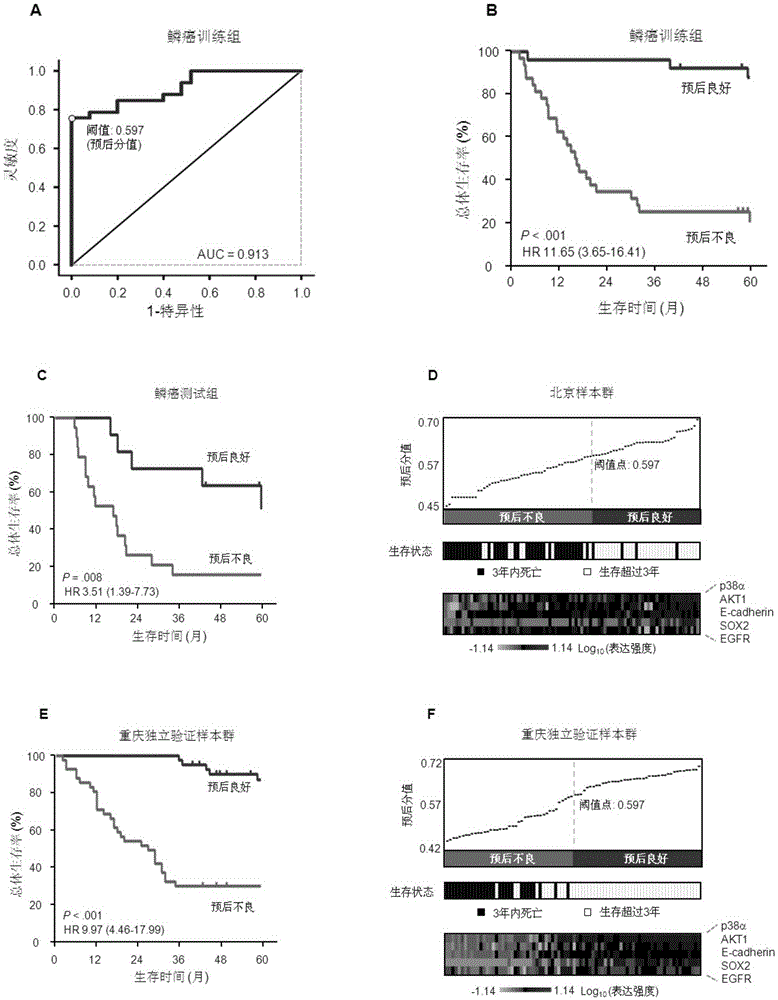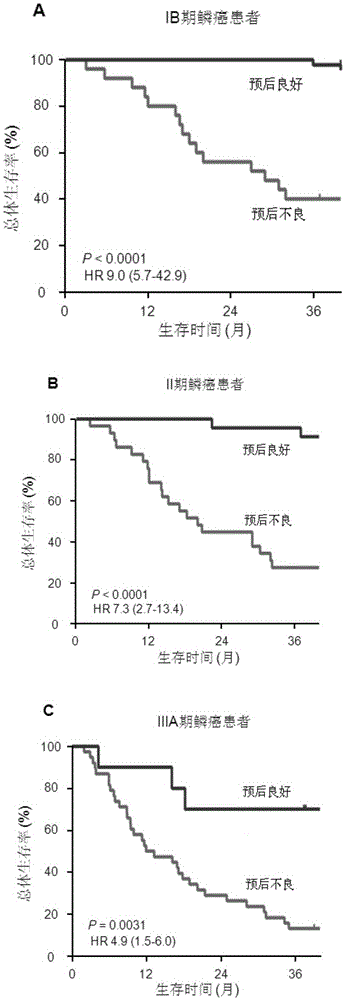System for predicting prognosis of patient with lung squamous cell carcinoma
A technique for squamous cell carcinoma of the lung, patients, applied in the field of biomedicine
- Summary
- Abstract
- Description
- Claims
- Application Information
AI Technical Summary
Problems solved by technology
Method used
Image
Examples
Embodiment 1
[0055] Example 1. Discovery of squamous cell carcinoma-related protein profile, combined molecular marker model, prognosis judgment of non-small cell lung cancer, and validation of P5-ADC prognostic method for squamous cell carcinoma
[0056] 1. Discovery of squamous cell carcinoma-related protein signatures
[0057] 1.1. Cases and samples
[0058] The formalin-fixed and paraffin-embedded human normal lung tissue samples were provided by Peking University People's Hospital and Southwest Hospital tissue bank. The formalin-fixed and paraffin-embedded lung tumor tissue samples were provided by the tissue banks of the Department of Pathology, Peking University People's Hospital and the Department of Pathology, Chongqing Southwest Hospital. Providers of lung tumor tissue (ie, patients) underwent radical surgery for lung cancer at the above-mentioned hospitals from 2004 to 2010 and systematically. The present invention does not include the following cases: cases with previous mali...
Embodiment 2
[0115] Example 2. Further prognosis of squamous cell carcinoma patients with TNM grade by P5-ADC prognostic method for squamous cell carcinoma
[0116] The method for further prognosis of squamous cell carcinoma patients graded by TNM is: for squamous cell carcinoma patients of any grade graded by TNM (such as patients with stage IB squamous cell carcinoma), the expression score of P5-ADC is obtained according to the method of Example 1, Then, according to the method in step 2.1 of Example 1, the expression score is used to obtain a prognosis score; each prognosis score is determined according to the method in step 2.2 of Example 1 to determine whether the patient with squamous cell carcinoma has a good prognosis or a poor prognosis.
[0117] Integrating the samples of BJ group and CQ group to obtain total squamous cell carcinoma samples, the P5-ADC prognostic squamous cell carcinoma method can further divide each patient in the total squamous cell carcinoma sample into a poor ...
PUM
 Login to View More
Login to View More Abstract
Description
Claims
Application Information
 Login to View More
Login to View More - R&D
- Intellectual Property
- Life Sciences
- Materials
- Tech Scout
- Unparalleled Data Quality
- Higher Quality Content
- 60% Fewer Hallucinations
Browse by: Latest US Patents, China's latest patents, Technical Efficacy Thesaurus, Application Domain, Technology Topic, Popular Technical Reports.
© 2025 PatSnap. All rights reserved.Legal|Privacy policy|Modern Slavery Act Transparency Statement|Sitemap|About US| Contact US: help@patsnap.com



